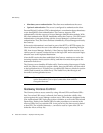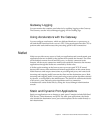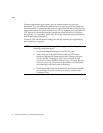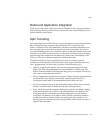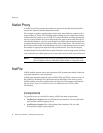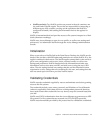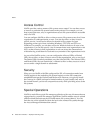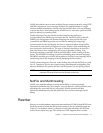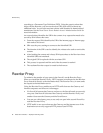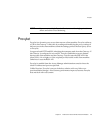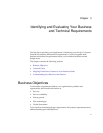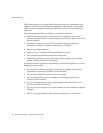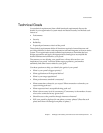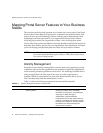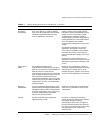Rewriter Proxy
48 Portal Server 6 2005Q1 • Deployment Planning Guide
according to a Document Type Definition (DTD). Using the generic ruleset that
ships with the Rewriter, you can rewrite most URLs (but not all) without any
additional rules. You can also associate rulesets with domains for domain-based
translations. See the Portal Server Secure Remote Access 6 Administration Guide for
more information.
An external ruleset identifies the URI in the content. Any request that needs to be
served by SRA follows this route:
1. From the request, SRA identifies the URI of the intranet page or Internet page
that needs to be served.
2. SRA uses the proxy settings to connect to the identified URI.
3. The domain of the URI is used to identify the ruleset to be used to rewrite this
content.
4. After fetching the content and ruleset, SRA inputs these to the Rewriter where
identified URIs are translated.
5. The original URI is replaced with the rewritten URI.
6. This process is repeated until the end of the document is reached.
7. The resultant Rewriter output is routed to the browser.
Rewriter Proxy
To minimize the number of open ports in the firewall, use the Rewriter Proxy.
When you install the Rewriter Proxy, HTTP requests are redirected to the Rewriter
Proxy instead of directly to the destination host. The Rewriter Proxy in turn sends
the request to the destination server.
Using the Rewriter Proxy enables secure HTTP traffic between the Gateway and
intranet computers and offers two advantages:
• If a firewall is between the Gateway and server, the firewall needs to open only
two ports. One firewall is between the Gateway and the Rewriter Proxy and
another is between the Gateway and the Portal Server.
• You can use a third-party proxy to use only one port in the second firewall to
read the Rewriter Proxy.
• HTTP traffic is now secure between the Gateway and the intranet even if the
destination server only supports HTTP protocol (not HTTPS).



